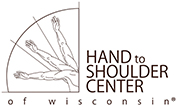Healthcare News
Management of Severe Elbow Arthritis in a Young Patient
Elbow osteoarthritis is occasionally primary and most often post-traumatic. Nonoperative treatment is frequently the best course of action. Available surgical options are governed by the location of cartilage deterioration, bone structure, and preoperative joint instability.
Benefits and limitations of diagnostic shoulder arthroscopy for painful anatomical shoulder arthroplasty investigation
Shoulder arthroscopy is a valuable diagnostic tool for painful anatomical shoulder arthroplasty offering some therapeutic opportunities. It has been demonstrated as a sensitive option to diagnose periprosthetic joint infection and is most frequently used for this purpose. Additionally, it offers the possibility of diagnosing some complications after shoulder arthroplasty such as component loosening or rotator cuff failure. As therapeutic options are mostly limited to arthrolysis, and débridement and decompression, most patients will have to face a revision arthroplasty. Nevertheless, diagnostic arthroscopy provides a valuable tool to gain information on the cause of the symptoms to determine further steps of treatment.
Chlorhexidine irrigation during TSA may decrease rates of positive deep C. acnes cultures
Patients who received subcutaneous 0.05% chlorhexidine gluconate antisepsis during primary total shoulder arthroplasty had a significantly decreased rate of positive deep cultures of Cutibacterium acnes, according to a study.
Causes of Pain Between the Shoulder Blades
Pain between the shoulder blades is often due to muscle strain, which may result from lifting heavy objects, poor posture, or overuse. Other health issues can cause upper back pain, though, including acid reflux, disc problems, gall bladder disorders, or even a heart attack. Different disorders will cause different types of pain.
Is cycling good for older adults?
Cycling is a low impact activity that can offer a variety of health benefits to older adults. Certain bicycle features and safety tips can enhance the experience.

